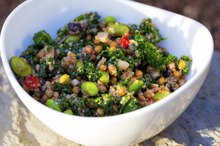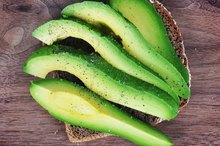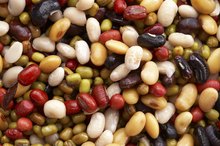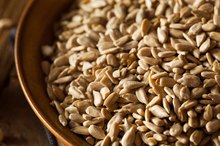The Gold Ring Test on Cheek for Iron Deficiency
Iron is a component of hemoglobin, the oxygen carrying part of red blood cells. Without enough iron, the body does not get enough oxygen causing a person with low iron to feel continuously exhausted. Iron deficiency, a type of anemia, is usually treated by increasing the amount of iron a person consumes.
About the Gold Test
Using gold jewelry, such as a gold ring to test for iron deficiency is an old wives' tale 2. According to the story, rubbing a gold ring on the outside of your cheek will help you detect if you are anemic. A dark line indicates that you are anemic; no line indicates that you are not iron deficient.
Accuracy of the Test
Does Iron Deficiency Cause Headaches?
Learn More
Although rubbing a gold ring on the check may leave a black line, there is no scientific research that shows that this means the person has anemia. There are several hypotheses as to what causes the black line, including a reaction with cosmetics or lotions on the skin, the person’s individual skin chemistry, and other metals adhered to the gold ring or dirt on the ring.
Accurate Anemia Tests
Do not rely on the gold ring test if you feel you may be iron deficient; doctors do not use gold rings to test for anemia 2. However, if you have symptoms of anemia, do call your doctor. The only accurate way to determine if you have anemia is to get a blood test.
- Do not rely on the gold ring test if you feel you may be iron deficient; doctors do not use gold rings to test for anemia 2.
- The only accurate way to determine if you have anemia is to get a blood test.
Related Articles
References
- WebMD: Understanding Anemia - the Basics
- Palomer College: Re: [HAPS-L] Myth? Gold Test for Anemia.
- American Academy of Pediatrics Clinical Report. Diagnosis and Prevention of Iron Deficiency and Iron Deficiency Anemia in Infants and Young Children (0-3 Years of Age). Pediatrics 2010; 126: 1040-1050.
- Hoffman: Hematology: Basic Principles and Practice, 5th ed.
- Kliegman: Nelson Textbook of Pediatrics, 18th ed.
- NIH. Office of Dietary Supplements. Dietary Supplement Fact Sheet: Iron. Updated August 2007.
Writer Bio
Lynn Anders has more than 15 years of professional experience working as a zookeeper, wildlife/environmental/conservation educator and in nonprofit pet rescue. Writing since 2007, her work has appeared on various websites, covering pet-related, environmental, financial and parenting topics. Anders has a Bachelor of Arts in environmental studies and biology from California State University, Sacramento.









